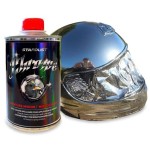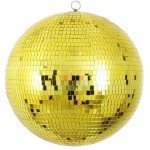What Is a Mirror Image Keyword?
A mirror image keyword refers to a slight variation of a primary keyword, typically involving a change in word order or the addition of a preposition. These variations often reflect how users naturally phrase search queries, encompassing different perspectives or specific intents related to the core keyword. Understanding and utilizing mirror image keywords is crucial for optimizing search engine optimization (SEO) strategies and enhancing online visibility.
Key Points about Mirror Image Keywords:
- Slight Variations: Mirror image keywords are not synonyms, but closely related phrases derived from the main keyword.
- Word Order Changes: Often, a mirror image keyword simply rearranges the words of the primary keyword.
- Preposition Inclusion: Adding prepositions like "for," "to," "in," or "near" can create mirror image keywords.
Consider the primary keyword "best Italian restaurants Chicago." Mirror image keywords could include "Chicago best Italian restaurants," "Italian restaurants in Chicago," or "best Italian restaurants near Chicago." These variations target essentially the same topic but reflect different ways users might search.
Why are Mirror Image Keywords Important?
- Capture Broader Search Intent: Users often phrase searches differently. Mirror image keywords ensure content caters to various phrasing possibilities.
- Increased Visibility: Utilizing mirror image keywords expands the range of search queries for which content can rank.
- Enhanced Relevance: By addressing specific user intents reflected in mirror image keywords, websites appear more relevant to search engines, potentially improving rankings.
Targeting only the primary keyword might miss a significant portion of the target audience. Incorporating mirror image keywords allows content to capture a wider range of searches and connect with users who employ different phrasing styles.
How to Identify Mirror Image Keywords:
- Brainstorming: Think about different ways people might search for the same information.
- Search Engine Autocomplete: Observing search engine suggestions as you type a keyword provides insights into common variations.
- Keyword Research Tools: Many SEO tools offer features to identify related keywords and phrases, including mirror image keywords.
- Analyzing Competitor Strategies: Examining competitor websites and their keyword usage can reveal effective mirror image keyword strategies.
Effective keyword research goes beyond simply identifying the main keyword. Thoroughly exploring mirror image keywords provides a more comprehensive understanding of user search behavior.
Implementing Mirror Image Keywords:
- Website Content: Naturally incorporate mirror image keywords throughout website copy, including page titles, headings, and body text.
- Blog Posts: Create blog content addressing specific long-tail mirror image keywords to cater to niche searches.
- Meta Descriptions: Craft compelling meta descriptions using relevant mirror image keywords to attract clicks from search results.
- Image Alt Text: Optimize image alt text with mirror image keywords to enhance image searchability.
Strategic placement of mirror image keywords throughout online content ensures search engines understand the breadth and depth of the information offered.
Best Practices for Using Mirror Image Keywords:
- Avoid Keyword Stuffing: Overusing keywords can negatively impact SEO. Instead, focus on natural integration within relevant content.
- Prioritize User Experience: Content should always prioritize providing value to the user. Keyword usage should enhance, not detract from, readability and engagement.
- Track and Analyze Results: Monitor website traffic and keyword rankings to assess the effectiveness of mirror image keyword strategies and make adjustments as needed.
While mirror image keywords are valuable, their implementation should align with user-focused content creation principles. Keyword usage should complement, not compromise, the quality and relevance of the information presented.
Mirror Image Keywords and Long-Tail Keywords:
Mirror image keywords often intersect with long-tail keywords. A long-tail keyword is a longer, more specific phrase targeting a niche search. For example, "best Italian restaurants near Chicago Riverwalk" is both a mirror image and a long-tail variation of "best Italian restaurants Chicago." Addressing both concepts effectively creates a robust SEO strategy.
Impact of Mirror Image Keywords on Local SEO:
Mirror image keywords are particularly important for local SEO. Variations involving location-based prepositions (e.g., "near," "in," "around") help businesses target users searching for services or products within a specific geographic area. For example, a bakery might target "bakery near me," "bakery in [city name]," or "best bakery near [landmark]" to capture local search traffic.

Mirror Image A Maths Dictionary For Kids Quick Reference By Jenny Eather

Reflection Symmetry Of The Image Mirror Line Symmetrical
Fiche Explicative De La Leçon Mirrors Nagwa

How Mirrors Work Explain That Stuff
Fiche Explicative De La Leçon Mirrors Nagwa

500 Mirror Reflection Pictures Hd Free Images On Unsplash

Laterally Inverted Convex Mirror

Plane Mirror Uses Properties Definition Focal Length Diagram

Concave Mirror

Mirror Images








